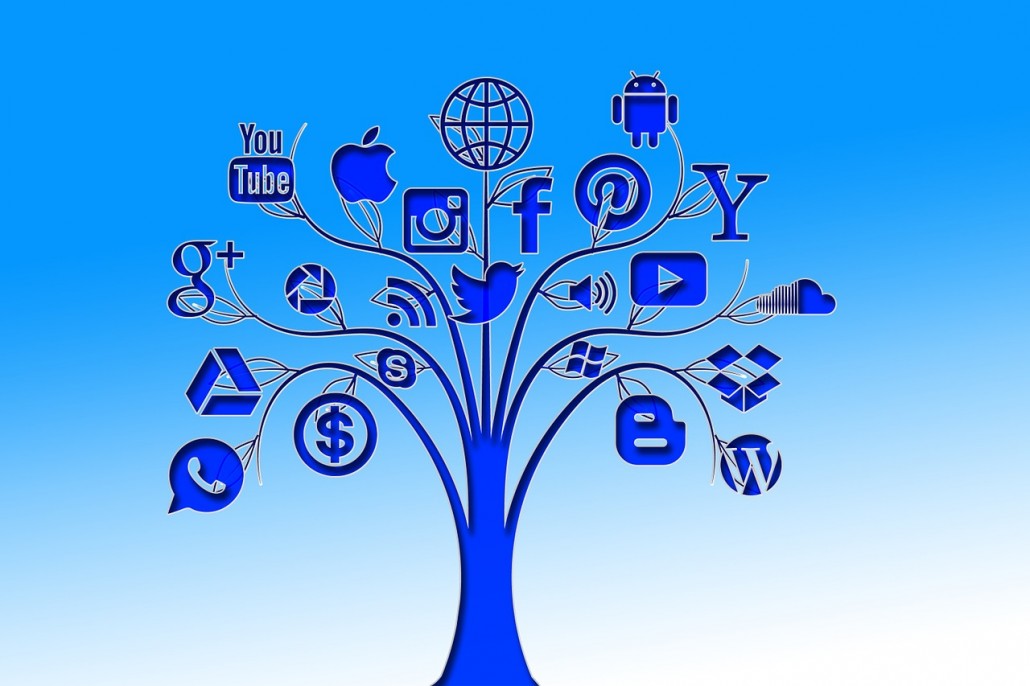
FirstRain is revving up for Dreamforce 2013, and to make sure we’ve got all the latest information, we’ve been watching The Road to Dreamforce on Salesforce Live. It’s been really informative and has helped get our creative juices flowing—except they stillwon’t tell us who the band is! Come on, guys!
The best part is that anyone can participate. If you have a question, you can easily ask in real-time: just go on Twitter and use #salesforceLIVE during the session. You might even get an on-air shout out and be famous like Justine!
If you missed yesterday’s episode, don’t worry. You can watch it here.

By Daniela Barbosa, Director of Business Development
It’s no secret that companies of all sizes are adopting tablets in the office. According to this poll of 610 professionals by CDW, more than half of the American workforce have used a tablet at work for more than a year. From being able to take a presentation on the go to accessing vital information outside of the office, tablets are the perfect gadget for today’s professionals. But if we are talking about revenue enablement, there isn’t anyone that benefits more from tablet use than salespeople.
Salesforce.com recently pointed out that 40% of sales teams use a tablet, according to the Sales Management Association, and they outlined six ways how tablets are transforming sales. How? For example, portable devices allow you to conduct B2B market research when you’re about to head into a client meeting and even to optimize your product pitch based on the sales intelligence you gather. Yet these aren’t the only reasons tablets are ideal for sales reps.
Makes Multitasking Easy
Tablets are everything rolled into one—laptop, your product catalogue and even means of communication with the rest of your team. In the CDW survey, this ability to do many things at once provides us with more than 1.1 hours in gained productivity every day. According to the survey’s info graphic, 84% of the respondents said tablets make them better multitaskers.
This is essential to sales reps who are driving revenue. It frees up time when you’re able to add another slide to your presentation before entering a client meeting and take notes right on your tablet instead of having to transcribe them into the computer later on. With sales reps already pressed for time, salesforce.com suggested tablets provide teams with access to insights in real-time, which results in smarter selling strategies—and here at FirstRain we have many enterprise customers that are already seeing these benefits with FirstRain for Touch solutions.
Increase Customer Visibility
You always need to have your finger on the pulse of your customer’s market, but this can be difficult when you can’t access information when you’re away from your desk. Apps from FirstRain and companies like salesforce.com provide teams with a way to collect customer insights, which can do more than just help you maximize sales strategy.
Salesforce.com suggested reps use tablets to boost customer engagement by loading the device with videos, slideshows and other types of media. When your client is able to see your pitch in action, they’re often more willing to purchase it.
Stay Constantly Connected
One of the greatest advantages of tablets is the ability to always be connected with the rest of the team. According to the survey, respondents said they couldn’t live without email access when they are away from the office—we all know how that feels! In addition to being connected, being able to communicate with co-workers can help sales reps improve their sales pitch and receive additional insight about their customer’s markets.
In fact, salesforce.com says that being able to communicate with colleagues on the go is a great advantage to sales reps. With cloud-based CRM systems, professionals can access customer records and keep track of opportunities. There is no question that being able to connect with your team and your CRM system is essential to maximizing your time and ensuring no opportunity is lost.
So yes, tablets are transforming the sales environment—is your team ready?

By Ryan Warren, Vice President of Marketing
Every aspect of the business needs a standard methodology, but nothing requires an official set of procedures more than sales. With generating revenue being central to the business’ success, sales reps need a specific process to follow to optimize their interactions with clients. Even if your team already uses a set sales methodology, if it’s not focused on gathering and employing customer intelligence, you’re not going to see all of the sales opportunities you could be. Creating a customer-focused procedure that is standard to your team can boost your sales and improve client relationships.
Understanding What “Sales Methodology” Means
According to sales training firm Richardson, your team should think of sales methodology as “the system a sales organization follows to win business.” Now, this can include many things, such as documenting the process of pitching a sale, to the tools the team uses to conduct customer intelligence, but for sales teams to be successful, each aspect of the methodology it uses should be client-centered.
Yet it’s much easier to develop a customer-focused sales methodology than it is to alter an existing one. However, teams can revamp their standard procedures by taking a look at each aspect of the selling process. Does the first contact with the client focus on how your team can help them, or on what their issues are? If you can’t answer that question with a client-centered answer, it may be time for you to overhaul your outdated sales methodology.
Steps that Work
According to Salesforce, the Budget, Authority, Need and Timeframe (BANT) methodology is no longer applicable to today’s customers. They say BANT doesn’t work anymore because 70% of all purchasing decisions are made before the sales rep is even present.
With that in mind, entrepreneur Mark Suster recommended teams develop a sales process in the following way:
Suster calls this process PUCCKA. Each of these steps answers part of the customer’s question, “why should I buy from you?” Clients are continually focused on what you can do for them, so your entire sales methodology should be compelling your whole client contact team—including those in customer service—to always be interacting with clients in a regulated method that is centered on their needs.
The Key: Gathering Customer Intelligence
According to Suster, outdated sales methodologies are the biggest reason most sales don’t close; many don’t focus on providing a solution to client needs. A customer-centered methodology is essential to today’s sales team, and every procedure relies on one main tactic: how you gather insight into your customers and their market.
With a customer insights tool that allows you to research your client’s markets, you’re able to identify what is driving your customers to seek out a solution and determine the right champion for the sales team. Conducting customer intelligence allows key players in the sales process—most notably, the reps—to understand how to interact with the client and even identify if there is leeway in pricing. You’re able to understand the challenges they are currently facing—and may face in the future—and develop a unique selling proposition centered around that information.

It’s on: We’re going to Dreamforce again! And this time, we’ve moved on up to Silver Sponsor status. Our booth last year was packed and buzzing with great conservations, with both attendees and salesforce.com employees wanting to learn more about FirstRain. So, this year we’ll have some more elbow room—and, in typical FirstRain fashion, we absolutely guarantee to have something extra special that will make you want to come on by!
These past few weeks have been really exciting at FirstRain with our launch of our new product, Market Insights, but now it’s time to start looking ahead. The Dreamforce momentum is really picking up, and we can’t wait to participate and show the Cloud community how FirstRain’s big data insight solutions can help companies increase revenue and put their go-to-market strategy into action.
For news and updates as we get closer to November 18, you can follow us on Twitter at @firstrain, and check us out on Facebook. Also, while you’re tuning into Dreamforce buzz (and hopefully getting as excited as we are), don’t forget to listen in to salesforce’s own “The Road to Dreamforce” weekly show to get the latest news and tips to make Dreamforce 2013 the best Dreamforce ever!

By Ryan Warren, Vice President of Marketing
Sometimes, you may think that anything is easier than gaining that one picky client’s trust. But, believe it or not, you can do it, because having the right knowledge at the right time is the key to understanding your customers. Yep, it’s a superpower every sales rep can have if they have the right tools and the right attitude.
So, here’s what you need to do: Take a deep look into your customer markets to get a complete picture of what’s going on and how you can help clients, then take that knowledge and build the relationship the old-fashioned way—with some good team-building techniques and a little bit of courage.
Get the Low-Down on Your Customers
Just because customers are in a similar market as another doesn’t mean they have the same needs—so, sorry to say it, but you need to do research on both. The solution that may work for Company A might just need to be tweaked for Company B, or you might have to change your entire strategy—so you need to know that before you delve into the selling process.
According to Salesforce, you need to utilize customer analytics to identify the key factors that are influencing your customer. Do they need a technical focus or a functional one? Salesforce recommended gaining knowledge about the finer points of your client’s market and their share of that market before you start trying to build a relationship.
Focus on Using Your Knowledge for Good, Not Evil
The best superheroes know when to show off their stuff and when to hide it—and they always have other peoples’ needs in mind. Earning your customer’s trust lies in focusing your research and subsequent pitch on their pain points. In a piece for Entrepreneur, Nadia Goodman, an expert on the psychology of entrepreneurship, suggested showing your customers they can trust you through demonstrating you understand their needs and have their best interests at heart.
Roderick Kramer, a professor of organizational behavior at Stanford University, told Goodman that trust develops when you show the customer that you are consistently working to improve their bottom line.
“Trust-building and maintenance take vigilance and sustained effort,” Kramer said. “Once you have it, you can’t rest on your laurels.”
Bring the Client into Your Team
According to Salesforce, you may need to enter uncomfortable territory to build trust—meaning you need to think outside of the box. Sometimes, team-building activities like inviting a customer to the company retreat can go a long way. Take them out to lunch with your manager or the rest of your team. When you show the customer you value their business so much that you’re going to bring them into your team, it can be the boost they need to realize that you can be trusted.
The One Thing You Can’t Forget
However, Salesforce recommended that one thing must be consistent—your behavior. This is where knowledge is your secret power. If you provide exceptional customer service during your first encounter, but drop the ball by not knowing of the big merger between two of their competitors and how it may affect them during your second, their belief in you can falter.
Building a trusting relationship with your customer takes time and consistency. Conducting research into your client and their market isn’t just important—it’s essential if you want to develop that trust. Gathering knowledge about your customer can set you apart from your competitors and gain the confidence of a client.

By Daniela Barbosa, Director of Business Development
Simply just being on networking sites isn’t enough anymore—to stay competitive you have to be creative with the content you are putting out there, showcasing your expertise and even creating a new social community. With all of its challenges, social media continues to be one of the most effective ways you can market your company and connect with clients. When your customers are able to interact with your company online, you’ll understand what is currently driving them to purchase a certain product or favor a specific brand. But think beyond just sharing content with your clients—develop an engagement strategy that’s specific to your target consumer and you will begin to see stronger sales.
Be Purpose-Driven
Forbes says that digital marketing campaigns are starting to move toward more purpose-driven content and branding, according to this infographic from We First, a B2B training company. The infographic highlighted that 54% of consumers don’t trust that brands are being genuine. Let that sink in for a minute. Your social media initiative is under customer scrutiny most of the time, and you need to figure out a way to bridge that disconnect and really interact with your customers. A main challenge to achieving this end is that the majority of employees, about 54%, said they didn’t clearly understand their company’s mission and so were unable to effectively communicate with customers online. After you make sure your employees really know what your company is trying to achieve, then you can turn to your customers. One of the key ways the infographic suggested for building customer loyalty online is by showcasing the humanizing aspects of your company, such as charity involvement, or highlighting a strong volunteer culture.
By developing a comprehensive social media strategy around your customers’ needs that all of your employees can follow, you will not only improve worker knowledge, but also ensure everyone is on the same page.
Learn From Entrepreneurs
But how do you make this a reality? Well, understanding your customers is key, but you should also gather some insider secrets from a few innovative professionals who have conducted successful social initiatives.
Entrepreneurs are often better able to think strategically about what they want to accomplish. According to a case study by Entrepreneur magazine, three startups gained strong sales early on by adopting a customer-centric—and, unsurprisingly, innovative—social media strategy.
One of these young professionals, Warby Parker, decided to increase awareness about his New York city-based online eyeglass company’s brand by encouraging clients to share their own stories and content on social media. Warby was able to promote his company by providing customers with the opportunity to try on the eyeglasses before buying, and then asking them to speak about their experience online, like whether they decided to purchase the frames. The strategy was focused on generating positive buzz about the company.
David Gilboa, co-founder and co-CEO of Warby’s company, told Entrepreneur that the marketing idea was a grassroots-type strategy for the brand.
“Don’t view social media as just another way to push your marketing messaging,” Gilboa said. “Think of Facebook, Instagram and Twitter as critical customer service gateways and take the time to respond to each and every customer who reaches out to you there. Each comment, photo and tweet gives you an opening to directly communicate with them on a meaningful, personalized basis that encourages brand loyalty.”

On this day in 1984, the space shuttle Discovery took off on its maiden voyage.
And just as the Discovery launch was another important step forward for NASA, FirstRain made another big advancement today with the launch of our newest product, Market Insights!
Our sales-focused solution, Customer Insights, is revolutionizing the big data analytics market and has become a valuable part of the daily workflow at many Fortune 500 companies. But some of these companies are already finding that sometimes customer intelligence alone isn’t enough—in order to truly put their go-to-market strategy into action, their marketing teams need market-focused intelligence as well.
And that’s why we created FirstRain Market Insights. Developed over the last year in collaboration with two of our leading enterprise customers (both major, Fortune 100 technology companies), Market Insights leverages our powerful semantic analytics technology in order to provide relevant, real-time market insights that CMOs, strategic leaders and entire marketing teams need about their specific lines of business.
The combination of our new Market Insights solution with our already popular Customer Insights product (not to mention our recently launched FirstRain for Touch) now makes a powerful suite of enterprise solutions providing unmatched business insights into your target markets and your top customers, helping you grow revenue and (finally!) putting your go-to-market strategy into action.
As with the rest of FirstRain’s products, it doesn’t matter if you’re on the road, at a customer site, on your iPads, iPhones or Android phones, via email, or integrated directly into company CRMs or social enterprise portals such as salesforce.com—we can deliver insight wherever and whenever you need it.
FirstRain Market Insights is available now. For more information, you can visit its product page or drop us a line at sales@ignite.firstrain.com.
We’re over the moon about our new product. In fact, it’s left us starry-eyed with wonder—and our early adopters are, too—we hope you’ll let us know what you think of it!

By Ryan Warren, Vice President of Marketing
When getting clients on board with what you have to offer, do you tend to ramble about how great your company is? Many of us may not realize it, but sometimes we go on a spiel about our own business’ successes instead of bringing it back to the client. I know you’re trying to convince the customer they need to work with your company to see results, but, let’s face it, there are times when your rehearsed speech is a waste of valuable meeting time—which is your time, by the way. Refocusing your attention on the customer and the product can help you quickly improve your sales productivity. In fact, sometimes your focus on your own company’s own greatness during a client meeting results from not knowing your customers well enough.
So here are three tricks to stop yourself from constantly talking about your own company and refocus on the customer’s needs:
1. It’s Not About You
In a recent Inc. magazine article, Geoffrey James wrote about receiving emails from companies that were focused on selling him on the business, not on providing him with a solution to his needs. While the companies in question got marks for telling a story to get his interest, James wrote it was all about them instead of him. And in the sales business, it should be all about the customer.
Exact Target suggested sales reps and marketing professionals remember who the audience is and target their speech accordingly. The customer isn’t there to be sold on your company itself but your product and how it can help them.
2. Leverage the Customer’s Own Stories
Every person has a story to tell about the one time they needed a certain solution, or had a bad experience, and as a sales rep you can take advantage of your client’s need to connect by asking them about a time when things went wrong; turn the story back on their company. Not only does this show the customer that you’re there to help them, but it builds trust between your company and theirs. They understand you’re in the business of selling them a product, so go ahead and get them to talk about how much they need it—you may find the client start to convince themselves to purchase your solution.
3. Know When to Talk—and When Not to
If I haven’t already scared you off, take heart by understanding that sometimes you should talk about yourself—just know when.
Exact Target recommended asking yourself before you speak if the information you are about to communicate to the client is actually worth their time. Now, this can be subjective, but it can be beneficial to watch what you communicate. Broadcasting is a great way to get clients on board with your company—just understand when something is irrelevant and switch gears back to the customer if you notice you’re off target.
James wrote that he would have bought one company’s product if they had spun their solution to him in the following way:
“Imagine you’re calling a vendor for support and the call center guy has NO CLUE what you’ve already bought,” James wrote. “Suddenly you’re spending your valuable time providing information that your vendor should already know. So here’s my question: how long before you start looking for a new vendor who has their [stuff] together?”
Bring everything back the client by refocusing your strategy on how you can help them, not the other way around.

By Ryan Warren, Vice President of Marketing
There’s so much to remember when you’re trying to close a sale—conduct customer research beforehand, make eye contact, have a firm handshake—that it can get overwhelming for new and experienced reps alike. Sometimes, the stress of keeping everything in mind can even cause even a skilled sales professional to stumble. Yet, you have options. Dan Cole, vice president for the International CES, recently gave sales reps 10 sales commandments. While 10 is an even, nice number, sometimes that many guidelines can be too much. So here’s just few commandments—five, not 10, because, let’s face it, sometimes less is more—to use to improve your sales productivity and make your life just a little bit easier.
1. Thou Shalt Conduct Research
You can’t really sell a product successfully if you haven’t prepared. Reviewing what’s going on in the industry is essential to interacting with the customer. Not being able to speak to what they currently need—or will need in the future—can result in a difficult relationship. But collecting market insights is more than just a preparation technique to build a rapport—it shows the client that you respect their needs and are willing to go the extra mile to deliver results, and they’ll trust you for it.
2. Thou Shalt Stay Confident
This is on Cole’s list—and many others’, for that matter—for a reason. Being confident in your own abilities and the value you are providing can make all the difference. Positivity radiates from you, your body language is more open and you’re able to make the client laugh when you are confident. Making eye contact and having a firm handshake just happens naturally.
3. Thou Shalt Communicate
Grant Cardone, sales expert, advised professionals in an Entrepreneur article to focus on speaking and writing clearly. Effective communication is often overlooked by reps when there’s a sale on the line, but don’t forget your relationship with the client suffers when there’s confusion. Cardone suggested sales professionals tape themselves on a recorder to hear themselves. Sometimes we don’t know we’re not being clear. So pick up a video camera and speak with other members of your sales team.
But communication is more than just talking with another person—it’s also important to express yourself clearly in writing. Cardone recommended reps present a proposal in writing that is extensive but to the point to prevent any future confusion or unmet client expectations.
4. Thou Shalt Serve the Customer
Perhaps the golden rule of sales—focusing on the customer—yet it can take a backseat to other issues. But think about it—you’re providing a service that another person is paying for, so give them a reason to do business with you. This can take the form of listening to concerns with empathy and patience to showcasing a product’s results over its features. While Cole separated this golden rule into many smaller commandments, if you are constantly striving to serve the customer, other things, such as working hard and seeking understanding, come more easily.
5. Thou Shalt Never Quit
Last but not least, do not give up. You know when a sale is 100% not going to happen, and you know when to have hope. Don’t get pushy, but don’t get pushed to the side either. Cole recommended you not be satisfied and Cardone advised you to stay with the buyer. Yet you can take this one piece of wisdom from Tom Hopkins, a sales expert, that I got from Inc. magazine:
“The number of times I succeed is in direct proportion to the number of times I can fail and keep on trying.”

By Ryan Warren, Vice President of Marketing
Often, sales reps forget that everything comes down to what a product can do for the client. It’s so easy for sales professionals to get caught up in identifying sales opportunities for the business and creating the perfect pitch that they lose sight of matching the right client with the right product. Sales intelligence software can get you halfway to closing the sale, but the rest comes down to remembering that clients interact with sellers all the time, so you have stand out. But how do you do that? You take your market research, start a dialogue with the client and actually discuss how the product will benefit them specifically.
Let the Product Speak
In an interview with Inc. Magazine, Kristin Zhivago, author and revenue coach, advised sales professionals to take a few moments to question if they are actually discouraging customers from purchasing the product without even meaning to.
Zhivago suggested reps take their customer intelligence research—since, let’s face it, we can’t get a look into our client’s brains—to identify what aspects of the product are actually right for them. The customer wants to be wooed by what you’re selling, so communicate the product’s results and features.
Go beyond the benefits that are easy to see. Showcase how this client specifically can smoothly transition to using the product and the immediate results of doing so. You can center your efforts on one result or feature and work from there.
According to Salesforce, speaking with the client directly and genuinely about the product can ensure you close the sale. Michael Kassan, chairman and CEO of MediaLink, told Salesforce’s director of social content marketing, Jennifer Burnham, that successfully selling a product is all about communication.
“Communicate, communicate and communicate,” Kassan said. “You have the opportunity today as a company and as an individual to have the highest level of direct communication with your customer [...] Utilizing that capability to its fullest is the key to success in business today.”
So, focus on the product: how its features have produced marked results and why it is perfect for them. You may begin to see a dialogue form between you and the client in which the product basically begins to sell itself—and all because you did your market research and kept your eye on the client.
